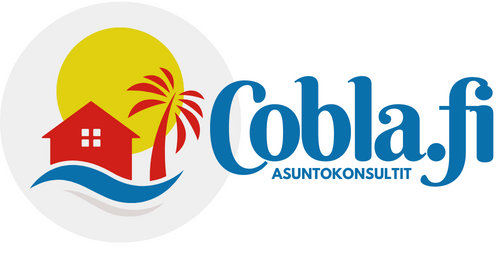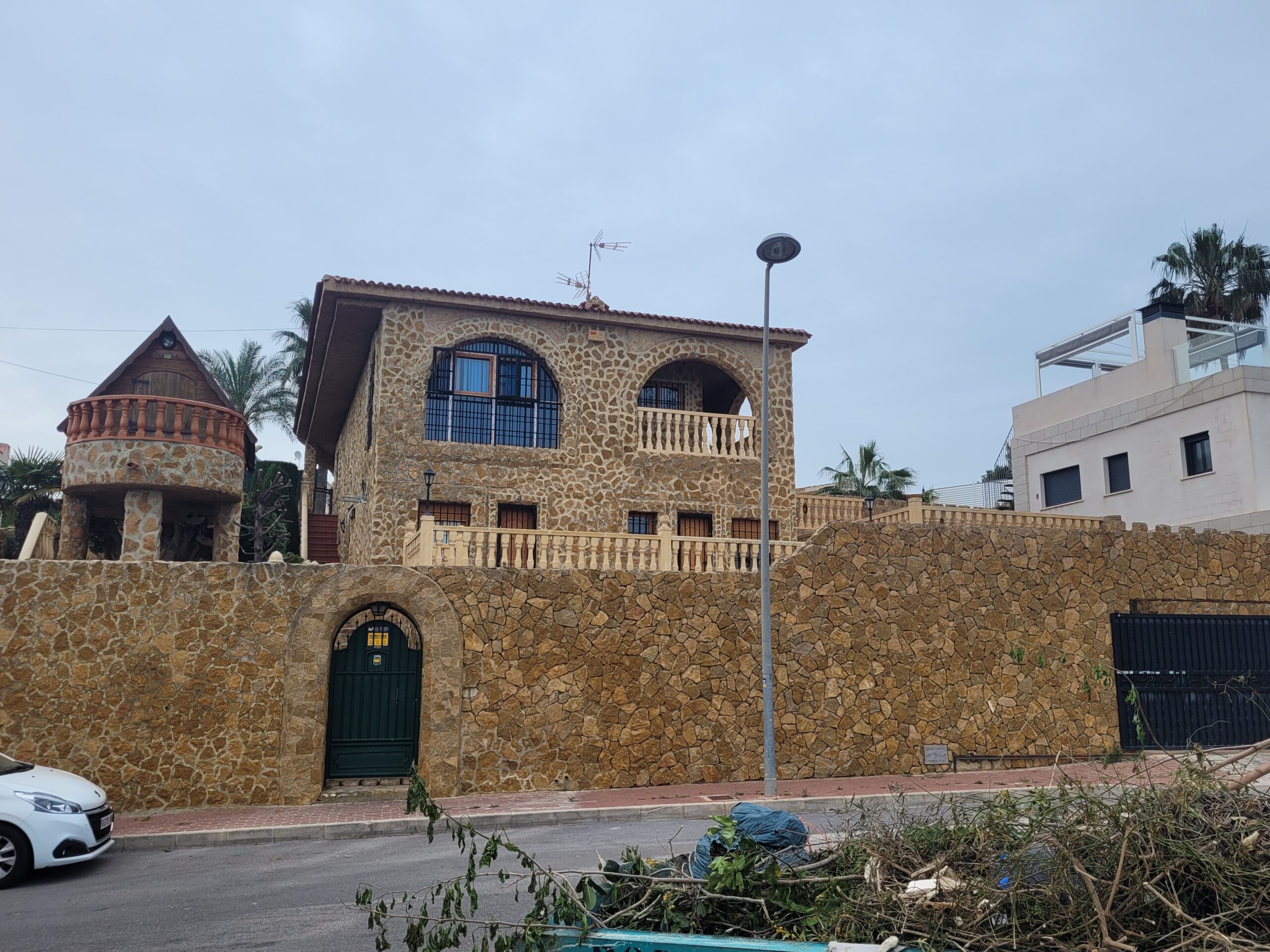Household skills
Taloustaidot
Housing prices refuse to decline. The rise in interest rates is not visible in prices. When will the real estate market move to a new situation? Housing pricing changes must occur later this year, even if they will not be particularly significant or extensive. The Spanish housing market is slowing down. However, prices show exceptional flexibility that has made everything surprising. Many buyers can only wait for the prices to fall, which would already be putting pressure on interest rates. The rise in housing prices is 4 % between 2023 and 2024. The average inflation forecast is 3.4 % in 2023 and the same figure in 2024. It predicts a 3 % drop in 2023 and 2 % in 2024 in housing prices. Real estate agents say they have found sales times doubled compared to six months ago, so there is no deal and something must be done.
The purchase and sale of housing in Spain fell 18.4 % last July compared to the corresponding month last year. According to the Spanish Notary Council, the price per square meter fell by an average of 4.6 % from a year ago, so a change in the housing market is expected. For such a long time, it has been caused by foreign demand for prices, but it does not explain the situation alone, as the total purchase of foreigners is about 15%.
Finance
When you go to home sales, you need to know what the terms mean and how they will affect the cost of living. Even in my forties, I had not even found out exactly the terminology and how the changing economic situation affects what. I learned a few things when you do home sales, all the property issues should be discovered, such as pipe, elevator, and exterior. In addition to this, old apartment buildings may have an electric renovation at some point, but it is not a very expensive renovation. I trusted my bank to make a good loan agreement and it was until interest rates rose. I got a loan repayment chart and I believed that this was going and the loan is about the same every month. I raised the paper where the tables were and read the first line of the contract. It reads that the table is based on the interest rate valid at the time of printing, as well as the repayment commitment and service price list. The interest rate and other charges may change under the terms of the credit agreement. Oh!
Euribor
The interest rate on the mortgage consists of a reference rate and a margin. The most common mortgage reference rate in Finland is the 12-month Euribor. Euribor (Eurobank Offered Rate) is a reference rate for the euro area money market, which indicates the price at which large banks give each other credit to each other. Euribor interests are quoted for periods of different lengths, for example, 12 months, 6 months, and 3 months. Euribor is the most important reference rate for the euro area and Europe. ”The marginal interest rate is the part of the interest rate that the bank determines, for example, in credit agreements. The interest rate of banks, such as the mortgage rate, is made up of the reference rate and the bank margin (= bank margin interest). Depending on the customer relationship and the customer’s ability to pay, the mortgage rate is generally less than 1%. The reference rate is a publicly listed interest rate used in the pricing of the MFI’s take-off and administration, bonds and other debt instruments, which determines the price of the loan agreement. ”, Borrowed from Wikipedia.
Financial consideration and consideration
The financial consideration refers to a loan taken by a housing association, also known as a corporate loan. Both terms are used almost as much. For example, apartment buildings are very typical financial consideration items where a corporate loan is applied, even for renovation or maintenance. Civil expenses are the costs that are incurred in addition to the financial consideration. Such costs may include but are not limited to, a care fee that includes internal housing company activities such as hosting, maintenance, property taxes, and insurance. So the consideration and the financial consideration are not the same thing, so these should not be confused.
Care fee
Thus, the care fee is a separate consideration, which is typically paid monthly and is intended to guarantee the basic functions of the housing association. The financial consideration, on the other hand, is a loan repayment that you pay back to the bank for which the corporate loan has been applied for.
Previously, I told you that in Finland, housing that can be accessed with a relatively moderate amount. After the transaction, you have to start paying both apartment-specific financial and plot fees. The housing association has borrowed for both the house and the plot. Loan money, which both the homeowner pays monthly, and then, of course, is a personalized mortgage loan. Is this possible in Spain? There is a property tax in Spain, which applies to all housing, including parking spaces. In addition to the apartment, the owner of the apartment owns his share of the land in the land. The housing association invoices eg. The housing association’s maintenance and lighting, which I have had a few dozen. For 65 square meters of apartment, I have paid about EUR 500 on property tax a year, ie IBI. The homeowner himself takes care of the electricity and water fees and any maintenance work for the apartment. In the event of a water damage, the homeowner pays the damage, not a housing company, so home insurance must be very comprehensive. Home insurance is on the owner’s account and not a tenant, as in Finland. In Finland, the apartment is actually owned by a housing company, where you buy a share. The shares entitle the apartment to manage the apartment, but the owner is a housing company. In Spain, you own the apartment yourself and are responsible for everything.
Apartment buildings may include house and plot rentals that are tied to the business index, so household skills are important. What if a limited liability company has more of their own who cannot pay mandatory invoices? Who pays? Other residents and if not, the house will bankrupt. The purpose is not to be intimidated, but everything is worth thinking about. We were about to buy a block of flats in Finland, but so poorly managed in the housing company that we retreated. At some point in the house owners, they are informed that they have several additional consideration to be paid, how the people’s ability to pay is. Especially young people with accurate budget. The extra € 6,000 -10,000 is a lot of money in this economic situation.
The cost of living index or consumer price index
The cost index, or consumer price index, tells about the price development of goods and services in Finland and is commonly used as a measure of inflation. Plot rentals are tied to the cost of living index. The cost of living index describes the same thing as the consumer price index. In shortness, the index tells about the development of prices paid by consumer goods and services. In August 2023, inflation in Finland was as high as 5.6%, almost half less in Spain. This can be concluded that in Spain, the economic situation is better and money is moving. Finland is saved and cannot afford to consume.
ECB or European Central Bank
In turn, interest rates affect mortgages. The amount of interest rates is decided by the European Central Bank, which can both raise and lower them. For many, the interest rate on the mortgage has risen or will rise to 4-5 %. The difference between Finns and Spaniards is that we generally take a loan bound to the 12-month Euribor, so changes in the economic situation are immediately reflected. In Spain, loans are tied to a fixed rate for several years, so these changes do not increase interest. However, getting a fixed loan rate is more challenging today.
Taloustaidot
Asuntojen hinnat eivät suostu laskemaan. Korkojen nousu ei näy hinnoissa. Milloin kiinteistömarkkinat siirtyvät uuteen tilanteeseen? Muutokset asuntojen hinnoitteluun pitää tapahtua loppuvuodesta, vaikka se ei tule olemaan erityisen merkittävää tai laajaa. Espanjan asuntomarkkinat ovat todellakin hidastumassa. Hinnat osoittavat kuitenkin poikkeuksellista joustavuutta, joka on saanut kaikki yllättymään. Monet ostajat eivät voi muuta kuin odottaa hintojen laskua, joihin korkojen nousu luulisi tuovan jo painetta. Asuntojen hintojen nousu on 4 % vuosien 2023 ja 2024 välillä. Inflaatioennuste on keskimäärin 3,4 % vuonna 2023 ja sama luku vuonna 2024. Se ennakoi 3 prosentin pudotusta vuonna 2023 ja 2 prosenttia vuonna 2024 asuntojen hinnoissa. Kiinteistönvälittäjät kertovat havainneensa myyntiaikojen kaksinkertaistuneen kuuden kuukauden takaiseen verrattuna, joten kauppa ei käy ja tällöin pitää tehdä jotain.
Asuntojen osto ja myynti Espanjassa laski viime heinäkuussa 18,4 % viime vuoden vastaavaan kuukauteen verrattuna. Espanjan notaarien yleisneuvoston tietojen mukaan neliöhinta laski keskimäärin 4,6 % vuoden takaisesta, joten muutosta odotettavissa asuntomarkkinoilla. Hintojen pysymiseen näinkin kauan ylhäällä on esitetty syyksi ulkomaisen kysynnän, mutta se ei selitä tilannetta pelkästään, sillä ulkomaalaisten kokonaisostot ovat noin 15%.
Taloustietoa
Kun lähdet asuntokaupoille, niin sinun on tiedettävä mitä termit tarkoittavat ja miten ne tulevat vaikuttamaan asumiskustannuksiin. En edes vielä nelikymppisenä ollut ottanut tarkkaa selvää terminologiasta ja miten muuttuva taloustilanne vaikuttaa mihinkin. Olin oppinut ne muutamat asiat, että kun teet asuntokauppoja, niin kaikki kiinteistöä koskevat asiat on otettava selville, kuten putki-, hissi- ja julkisivusaneeraukset. Tämän lisäksi vanhoihin kerrostaloihin voi tulla jossain kohtaa sähkösaneeraus, mutta se ei ole kovin kallis remontti. Luotin pankkiini, että tekevät hyvän lainasopimuksen ja se olikin, kunnes korot nousivat. Sain lainanlyhennystaulukon ja uskoin, että tällä mennään ja laina lyhenee suurin piirtein joka kuukausi yhtä paljon. Otin paperin esille, jossa taulukot olivat ja luin sopimuksen ensimmäisen rivin. Siinä luki, että taulukko perustuu tulostushetkellä voimassa olevaan korkoprosenttiin sekä takaisinmaksusitoumukseen ja palveluhinnastoon. Korkoprosentti ja muut maksut voivat muuttua luottosopimuksen ehtojen mukaisesti. Auts!
Euribor
Asuntolainan korko muodostuu viitekorosta ja marginaalista. Yleisin asuntolainan viitekorko Suomessa on 12 kuukauden euribor. Euribor (Euro interbank offered rate) on euroalueen rahamarkkinoiden viitekorko, joka ilmaisee, millä hinnalla suuret pankit antavat toisilleen euromääräisiä luottoja. Euriborkorot noteerataan eripituisille jaksoille, esimerkiksi 12 kk:n, 6 kk:n ja 3 kk:n välein. Euribor on euroalueen ja Euroopan tärkein viitekorko. ”Marginaalikorko on se korkokannan osa, jonka pankki määrittää asiakaskohtaisesti esimerkiksi luottosopimuksissa. Pankkien myöntämien luottojen, esimerkiksi asuntolainan korko muodostuu viitekorosta ja pankin marginaalista (=pankin marginaalikorosta). Marginaali on koron osuus, jolla pankki tekee voittoa ja pyrkii pienentämään lainan riskiä. Lainaa ottaessa marginaali neuvotellaan pankin kanssa ja sen suuruus vaihtelee asiakassuhteesta ja asiakkaan maksukyvystä riippuen. Asuntolainan marginaalikorko on yleisesti alle 1 %. Viitekorko on rahalaitoksen otto- ja antolainauksen, joukkovelkakirjalainojen ja muiden velkainstrumenttien hinnoittelussa käytetty julkisesti noteerattu korko, jonka perusteella lainasopimuksen hinta eli korko määritellään.”, Wikipediasta lainattu.
Rahoitusvastike ja vastikekulut
Rahoitusvastike tarkoittaa taloyhtiön ottamaa lainaa, joka tunnetaan myös yhtiölaina nimellä. Molempia termejä käytetään lähes yhtä paljon. Esimerkiksi kerrostalot ovat hyvin tyypillisiä rahoitusvastikkeen kohteita, joissa yhtiölainaa haetaan vaikka saneeraukseen tai kunnossapitoon. Vastikekulut ovat niitä kuluja, jotka syntyvät rahoitusvastikkeen lisäksi. Tällaisia kuluja voivat olla muun muassa hoitovastike joka pitää sisällään taloyhtiön sisäinen toiminnan kuten isännöintitoimiston, huollot, kiinteistöverot ja vakuutukset. Vastikekulut ja rahoitusvastike eivät siis ole sama asia, joten näitä ei tule sekoittaa toisiinsa.
Hoitovastike
Hoitovastike on siis erillinen vastike, jota maksetaan tyypillisesti kuukausittain ja sen tarkoituksena on taata taloyhtiön perustoiminnot. Rahoitusvastike sen sijaan on lainalyhennys, jota maksat pankille takaisin, josta yhtiölaina on haettu.
Aikaisemmin kerroin, että Suomessa myydään asuntoja, joihin pääsee kiinni suhteellisen maltillisella summalla. Kaupanteon jälkeen pitää alkaa maksaa sekä huoneistokohtaista rahoitus- että tonttivastiketta. Taloyhtiö on ottanut lainaa sekä taloa että tonttia varten. Eletään lainarahoilla, joita molempia asunnon omistaja maksaa kuukausittain ja sitten on tietenkin omakohtainen mahdollinen asuntolaina. Onko tämä mahdollista Espanjassa? Espanjassa on kiinteistövero, joka koskee kaikkea asumista, myös autopaikkoja. Huoneiston haltija omistaa asunnon lisäksi suoraan osuutensa tonttiin kuuluvasta maasta. Taloyhtiö laskuttaa mm. taloyhtiön huoltotöistä ja valaistuksesta, jotka itselläni ovat olleet muutamia kymppejä. 65 neliön kerrostaloasunnosta olen maksanut vuosittain noin 500 euroa kiinteistöveroa eli IBI. Asunnon omistaja huolehtii itse sähkö-ja vesimaksuista ja mahdollisista asunnon huoltotöistä. Vesivahingon sattuessa asunnon omistaja maksaa vahingot, ei taloyhtiö, joten kotivakuutus pitää olla erittäin kattava. Kotivakuutus on omistajan kontolla, eikä vuokralaisen, kuten Suomessa. Suomessa asunnon omistaa varsinaisesti asunto-osakeyhtiö, jolta ostat osakkeen. Osakkeet oikeuttavat huoneiston hallintaan, mutta omistaja on asunto-osakeyhtiö. Espanjassa sinä itse omistat asunnon ja vastaat kaikesta.
Kerrostaloissa voi olla talo- ja tonttivuokrat, jotka on elinkeinoindeksiin sidottu, joten taloustaidot ovat tärkeitä. Mitä, jos osakeyhtiössä on useampi omista, jotka eivät pysty maksamaan pakollisia laskuja? Kuka maksaa? Muut asukkaat ja jos eivät hekään, niin talo tekee konkurssin. Tarkoitus ei ole pelotella, mutta kaikkea on syytä miettiä. Olimme aikeissa ostaa Suomesta kerrostaloasunto, mutta taloyhtiössä niin huonosti hoidettu talousasiat, että vetäydyimme. Kun talon omistajat saavat jossain vaiheessa tiedon, että heillä on tulossa useita ylimääräisiä vastikkeita maksettavaksi, niin miten ihmisten maksukyky venyy. Varsinkin nuoret, joilla tarkka budjetti. Ylimääräinen 6000€-10 000€ on paljon rahaa tässä taloustilanteessa.
Elinkustannusindeksi eli kuluttajahintaindeksi
Elinkustannusindeksi eli kuluttajahintaindeksi kertoo tavaroiden ja palvelujen hintakehityksestä Suomessa ja tätä käytetään yleisesti mittarina, kun puhutaan inflaatiosta. Tonttivuokrat ovat sidottu elinkustannusindeksiin. Elinkustannusindeksi kuvaa samaa asiaa kuin kuluttajahintaindeksi. Indeksi kertoo lyhkäisyydessä kuluttajien tavaroista ja palveluista maksamien hintojen kehityksestä. Elokuussa 2023 inflaatio Suomessa oli niinkin korkea kuin 5,6%, Espanjassa melkein puolet vähemmän. Tästä voi tehdä sen johtopäätöksen, että Espanjassa taloustilanne parempi ja raha liikkuu. Suomessa säästetään, eikä ole varaa kuluttaa.
EKP eli Euroopan keskuspankki
Korot vaikuttavat vuorostaan asuntolainoihin. Korkojen suuruudesta päättää Euroopan keskuspankki, joka voi sekä nostaa että laskea niitä. Monilla asuntolainan korko on noussut tai tulee nousemaan 4-5 prosenttiin. Ero suomalaisissa ja espanjalaisissa on se se, että meillä otetaan yleisesti lainaa, joka sidottu 12 kuukauden euriboriin, joten muutokset taloustilanteessa näkyy heti. Espanjassa lainat sidottu kiinteään korkoon useammaksi vuodeksi, joten nämä muutokset eivät nosta korkoja. Kiinteän lainakoron saaminen on nykyään kylläkin haastavampaa.







